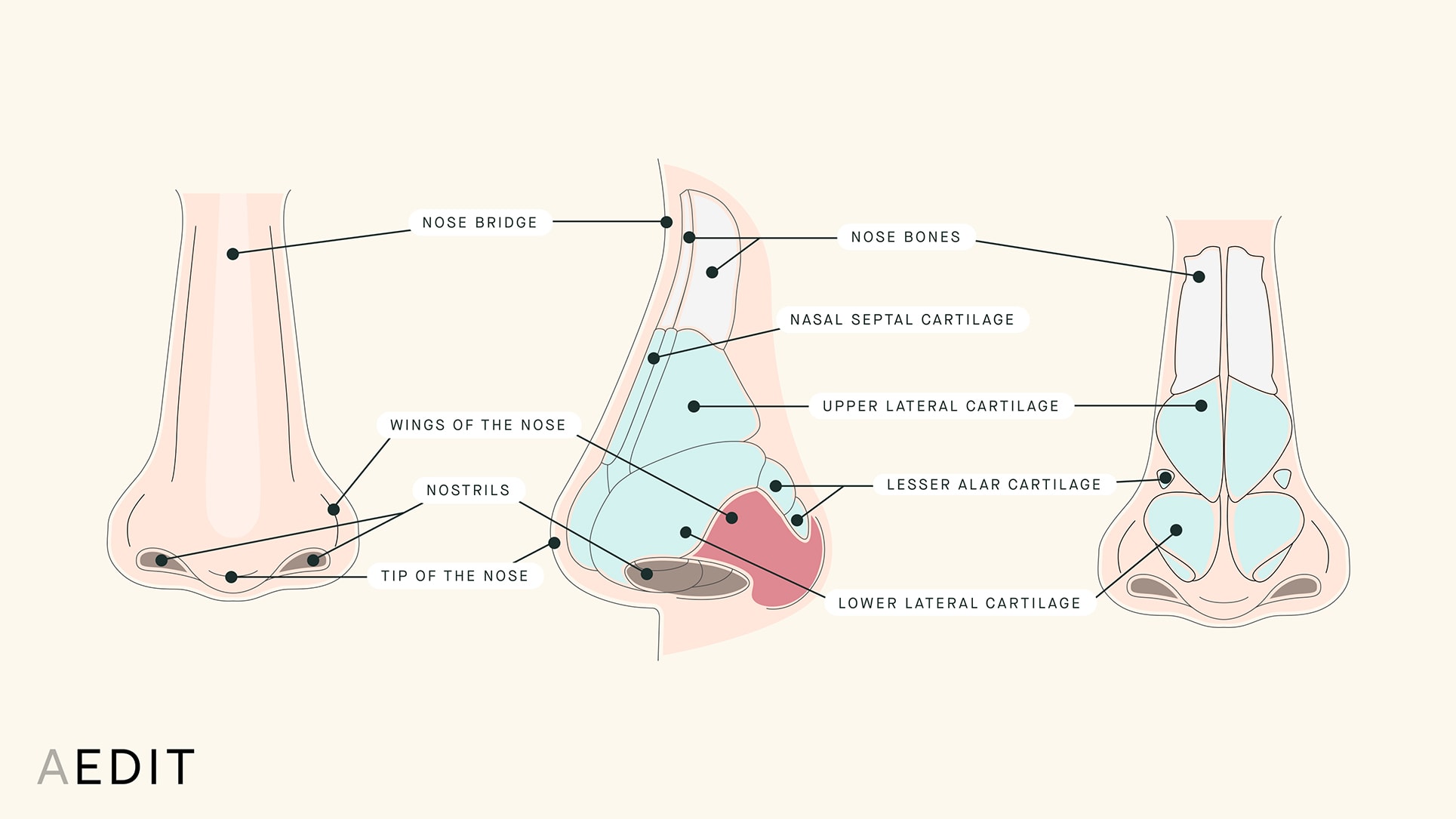Nose Angle
For the most part, we like to think of our faces as symmetrical. What happens when your nose isn’t cooperating? A plastic surgeon can help.
First things first, a brief anatomy lesson. The nose is made mostly of bone and cartilage. The nasal bones sit at the nasal bridge and then cartilaginous tissue runs down towards the nostrils. The area of the nose between the eyebrows is the root and the area at the nasal tip is the apex. The dorsum nasi (nasal dorsum) runs from root to apex.
The Anatomy of the Nose
Cartilaginous alae are a fancy name for the nostrils. The nasal septum lies within the nose and is made of bone and cartilage. It can be further broken down into the dorsal septum (along the top of nose) and the caudal septum (down by the nostrils). As mentioned, changes to nasal deviation (S-shaped, C-shaped, or I-shaped) can cause issues with the nasal septum.
So what exactly causes an angled or crooked nose? Well, sometimes it’s the genetic lottery and other times it may be an acquired look… like from a broken nose. A crooked or angled nose may be an aesthetic concern or a functional concern.
For those who are impacted (functionally or otherwise) by the angle of their nose, both nasal structure deformities and a deviated septum can be corrected with facial plastic surgery.
An angled or crooked nose can cause both aesthetic and functional concerns. All breathing issues should be addressed by a healthcare provider, but certain cosmetic breathing issues can be effectively addressed through plastic surgery. Regardless of whether your concern is aesthetic or functional, there are multiple treatment options to straighten and define the contours of the nose.
So, why would you want to straighten or refine the contours of your nose? Well, maybe you are seeking more facial symmetry, you’d like to breathe easier, you’re correcting a previous trauma, or you just want your nose back to it’s old shape. Whatever works for you.
Correcting an angled or crooked nose can be as involved as a full, surgical rhinoplasty (a.k.a. nose job) or as simple as a dedicated at-home makeup routine. Depending on your unique concern and desired aesthetic, a more or less involved procedure may be appropriate.
You can check out our full guide to Nose Angle Solutions or read on for an overview of the treatment options:
Nasal structure deformities (i.e. issues with bone, cartilage, and soft tissues) can be treated with a surgical rhinoplasty like an Open Approach Rhinoplasty, Closed Rhinoplasty, Endoscopic Rhinoplasty, Youth/Teen Rhinoplasty, Ethnic Rhinoplasty, Rejuvenation Rhinoplasty, or Ultrasonic Rhinoplasty. A Liquid Rhinoplasty is a less invasive option using dermal fillers.
If surgery and injectables aren’t for you, a dedicated home makeup routine can utilize contouring, highlights, and lowlights to alter the appearance of the nose in a temporary and easily adjustable way.
A deviated septum falls more under the category of cosmetic breathing issues, but it can be caused by a crooked or angled nose. A septorhinoplasty simultaneously enhances the appearance of the nose (with a rhinoplasty), while also alleviating mild breathing concerns (with a septoplasty). Consider that a win-win!

